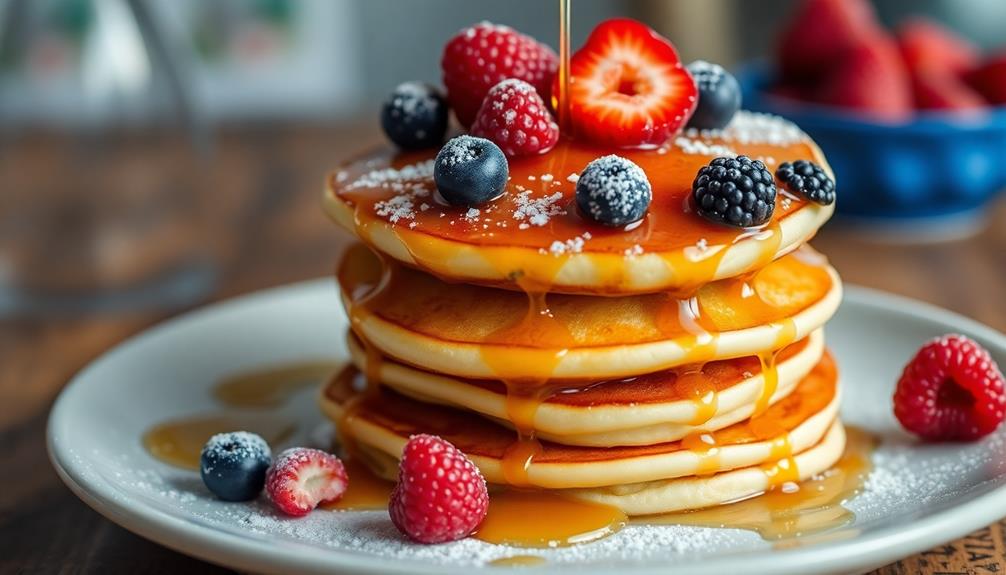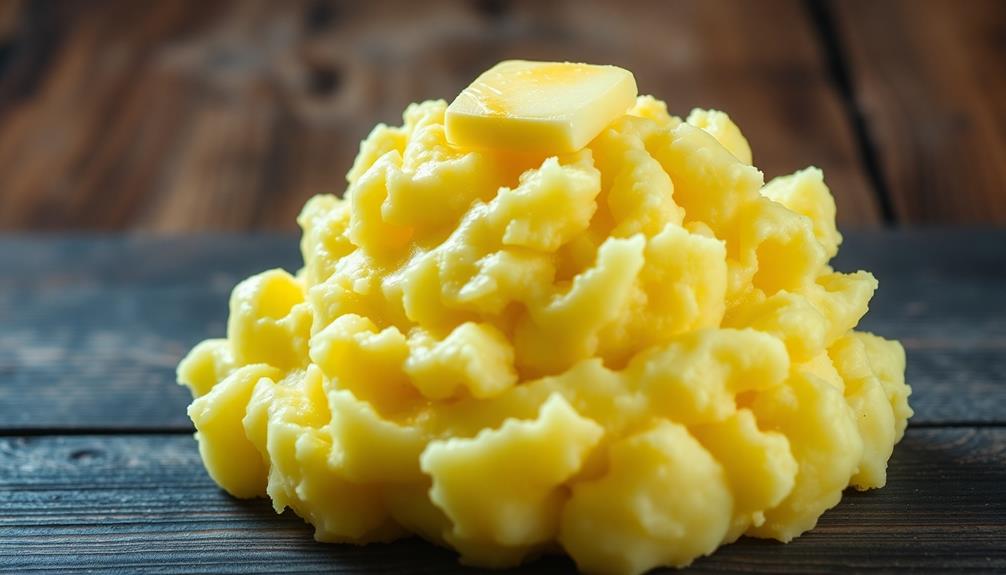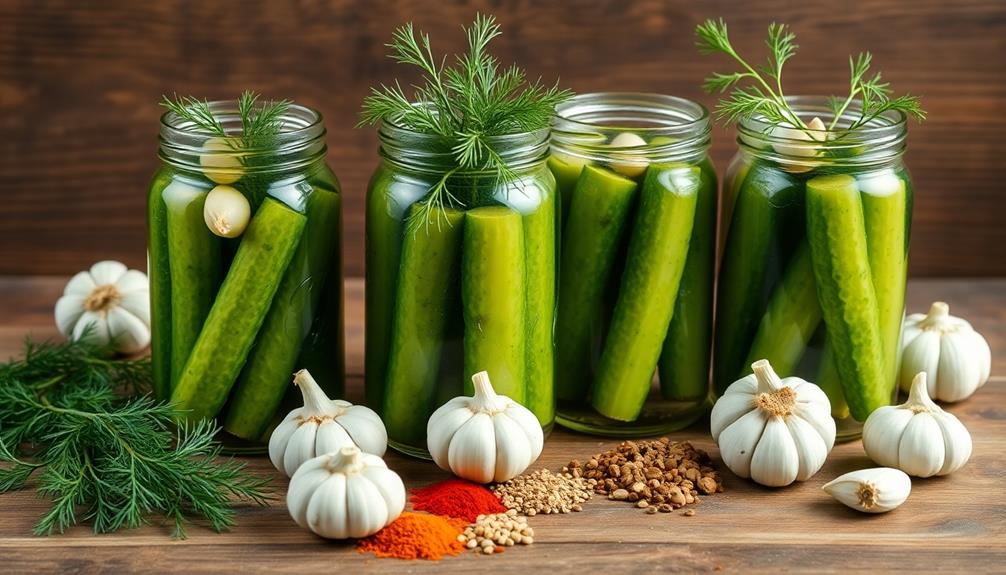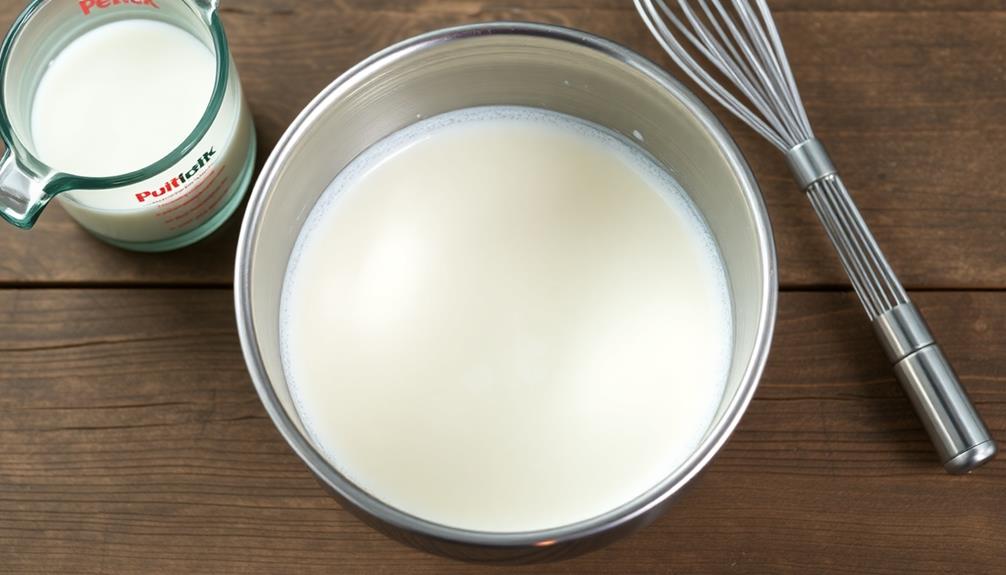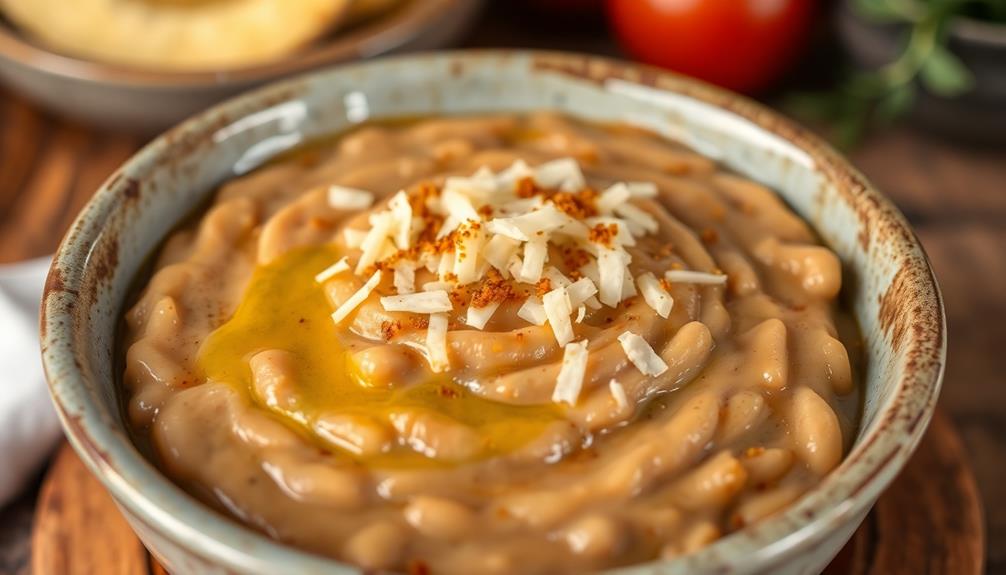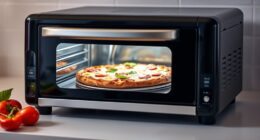Mastering the art of fluffy pancakes requires precise techniques and quality ingredients. The key is to avoid overmixing the batter, which can lead to dense pancakes. Sift dry ingredients, whip egg whites, and gently fold them into the batter to incorporate air for maximum fluffiness. Let the batter rest before cooking, and resist pressing down on the pancakes while they're on the griddle. Cooking temperature and technique also play a crucial role – experiment to find the ideal settings. With some trial and error, you'll soon be flipping your way to perfectly light and airy pancakes. And if you're ready to take your pancake-making skills to the next level…
Key Takeaways
- Proper mixing techniques, such as avoiding overmixing and gently folding in whipped egg whites, are crucial for achieving a light and fluffy pancake texture.
- Using high-quality ingredients, including all-purpose flour, baking powder, and baking soda, and allowing the batter to rest before cooking can enhance fluffiness.
- Maintaining the ideal cooking temperature, cooking in small batches, and resisting the urge to press down on the pancakes while cooking can preserve the pancakes' fluffiness.
- Experimentation and learning from each batch, including adjusting batter consistency and cooking temperature, are key to mastering the art of making fluffy pancakes.
- Gathering feedback from family and friends, and embracing the cooking process can make the journey of creating delicious and fluffy pancakes more enjoyable.
History
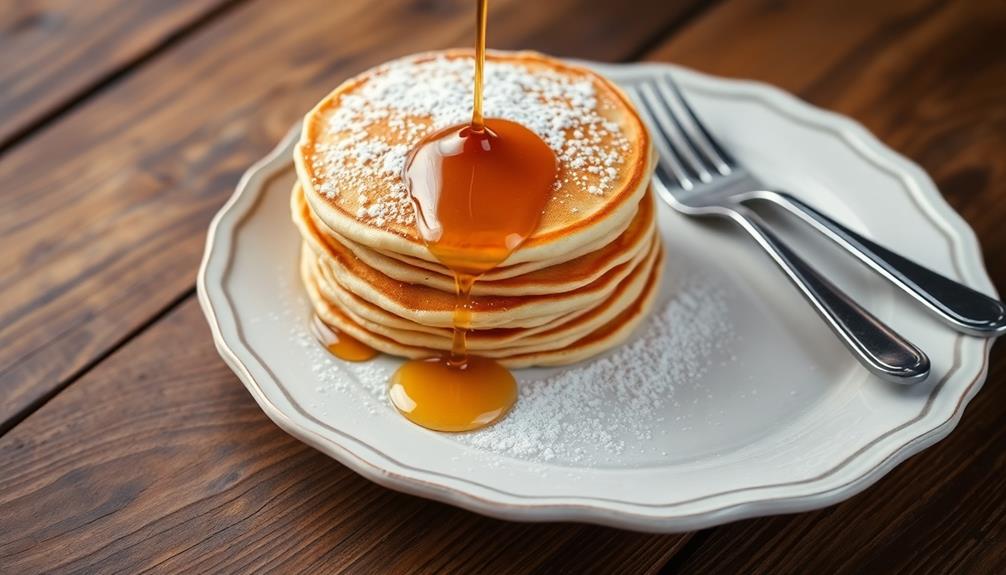
The origins of the fluffy pancake can be traced back to ancient times, where various cultures experimented with techniques to create light and airy batters. In ancient Greece, for instance, a dish called "tagenias" was made by mixing flour, eggs, and milk, then cooking the batter on a hot surface.
Similarly, the ancient Romans developed a recipe for "alita dolcia," which featured a fluffy, cake-like texture.
Over the centuries, the art of crafting fluffy pancakes evolved, with different regions and cultures putting their own unique spin on the classic dish. In the 18th century, American settlers developed a recipe for "johnnycakes," which used cornmeal instead of wheat flour.
Meanwhile, in Europe, the introduction of baking powder in the 19th century revolutionized pancake-making, allowing for even greater levels of airiness and volume.
Today, the quest for the perfect fluffy pancake continues, with chefs and home cooks experimenting with various techniques and ingredients to achieve that coveted light and airy texture. Some opt for folding whipped egg whites into the batter, while others swear by the addition of baking soda or club soda to create extra lift. Whether you’re mastering the art of breakfast or trying out an easy cake pop recipe for dessert, the key often lies in small adjustments that make a big difference in texture. With a bit of experimentation, finding your own signature pancake or cake pop technique can be both rewarding and delicious.
Recipe
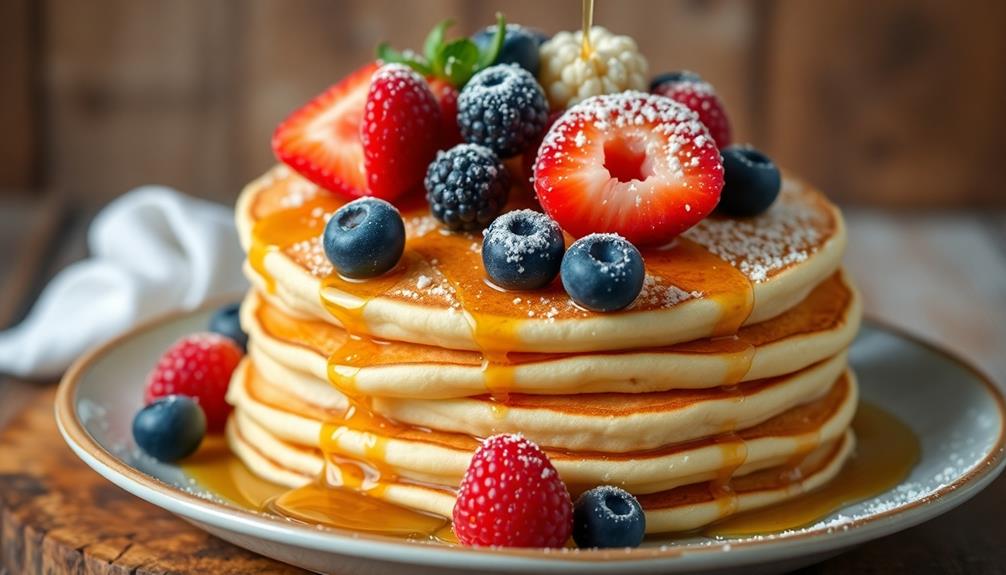
Fluffy, golden pancakes are a beloved breakfast treat that can elevate any morning routine. The key to achieving that perfect, light and airy texture lies in a few simple techniques and high-quality ingredients.
First and foremost, the batter must be mixed with precision. Overmixing can lead to a dense, rubbery result, while undermixing leaves pockets of dry flour throughout. The ideal consistency is slightly lumpy, with the wet and dry ingredients just combined.
- 2 cups all-purpose flour
- 2 teaspoons baking powder
- 1 teaspoon baking soda
- 1 teaspoon salt
- 2 tablespoons granulated sugar
- 2 large eggs
- 1 3/4 cups buttermilk
- 4 tablespoons unsalted butter, melted and slightly cooled
In a large mixing bowl, whisk together the dry ingredients. In a separate bowl, lightly beat the eggs, then stir in the buttermilk and melted butter. Gently fold the wet mixture into the dry ingredients until just combined, being careful not to overmix.
Allow the batter to rest for 5-10 minutes, which helps the gluten relax and results in a more tender pancake.
For the fluffiest pancakes, it's essential to avoid overcrowding the pan. Cook the pancakes in batches, using about 1/4 cup of batter per pancake, and resist the urge to press down on them with a spatula.
Serve the pancakes warm, with your favorite toppings, and enjoy the perfect start to your day.
Cooking Steps
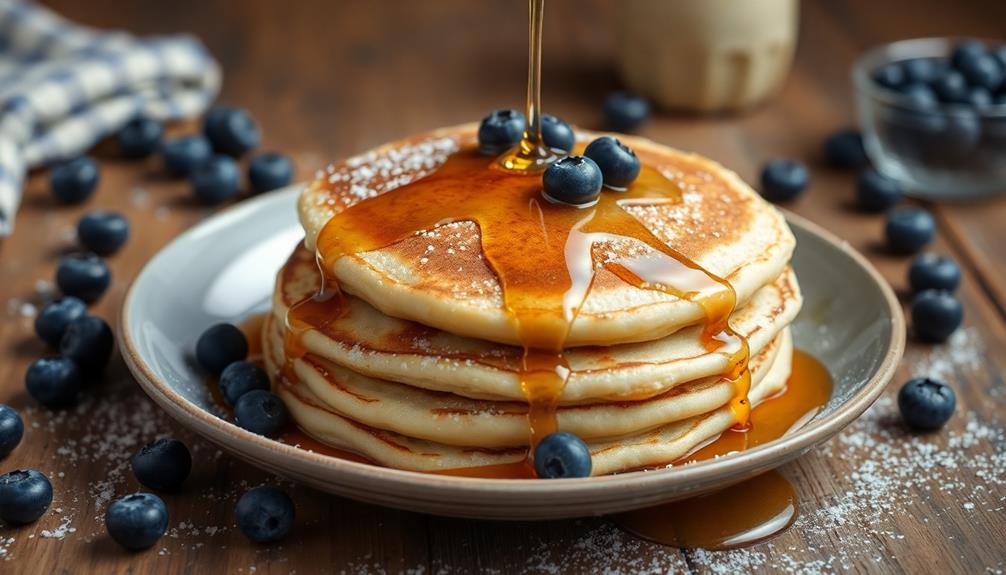
To get those fluffy pancakes just right, you'll want to whisk the dry ingredients thoroughly to incorporate air. To get those fluffy pancakes just right, you’ll want to whisk the dry ingredients thoroughly to incorporate air. Once your dry mixture is ready, combine it with the wet ingredients, being careful not to overmix the batter, as this can make the pancakes dense. If you’re in the mood for a different breakfast treat, this same attention to detail applies to homemade waffles made simple, ensuring crisp edges and a light, airy texture.
Then, separate the egg whites and beat them until they're stiff before gently folding them into the batter.
Step 1. Whisk Dry Ingredients Thoroughly
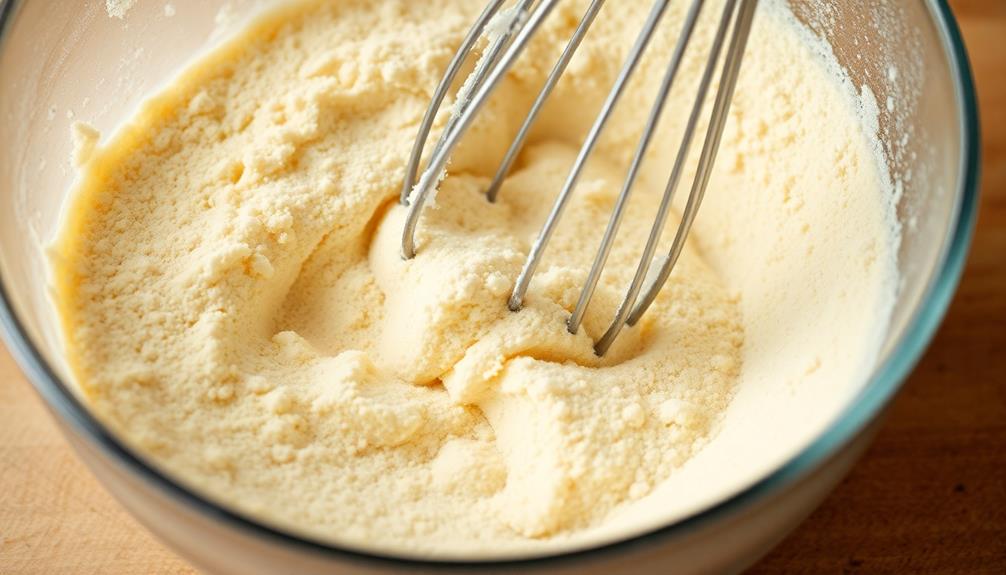
Whisking the dry ingredients thoroughly is a crucial step in achieving those light and airy pancakes you crave. This step helps to evenly distribute the baking powder, baking soda, and any other dry ingredients throughout the batter, ensuring a consistent rise and texture in your pancakes.
Take your time with this process, using a whisk or fork to vigorously mix the dry ingredients for about 30 seconds to 1 minute. Make sure to pay attention to the corners and sides of the bowl to incorporate all the components. This thorough mixing helps to activate the leavening agents, which will create those desirable fluffy pancakes.
Additionally, sifting the dry ingredients before whisking can help further break up any clumps and aerate the mixture, leading to an even more light and tender final product.
Step 2. Separate Egg Whites and Beat Until Stiff
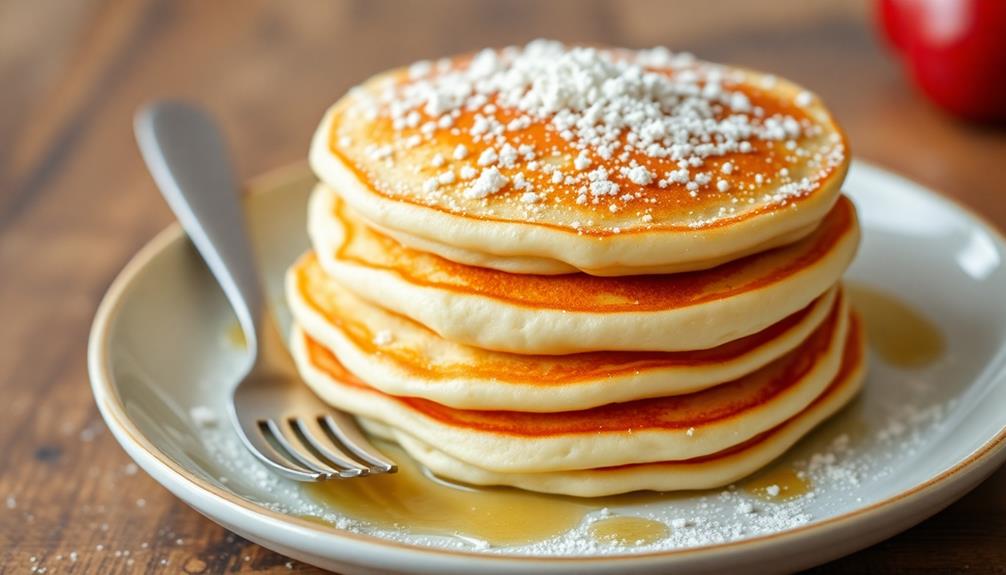
Cracking the eggs is the next crucial step in achieving those light, airy pancakes. Separate the egg whites from the yolks, being careful not to let any yolk mix in with the whites. This may take some practice, but it's an essential technique for creating fluffy pancakes.
Once the whites are separated, it's time to beat them until they form stiff peaks. Using a clean, dry bowl and beaters, whip the egg whites on high speed until they transform from a liquid into a thick, voluminous meringue. This helps incorporate air into the batter, resulting in those coveted light and tender pancakes.
Be patient during this process – it can take several minutes for the whites to reach the right consistency. You'll know they're ready when you can turn the bowl upside down without the whites sliding out.
Gently fold the whipped egg whites into the pancake batter, taking care not to deflate them.
Step 3. Fold in Egg Whites Gently
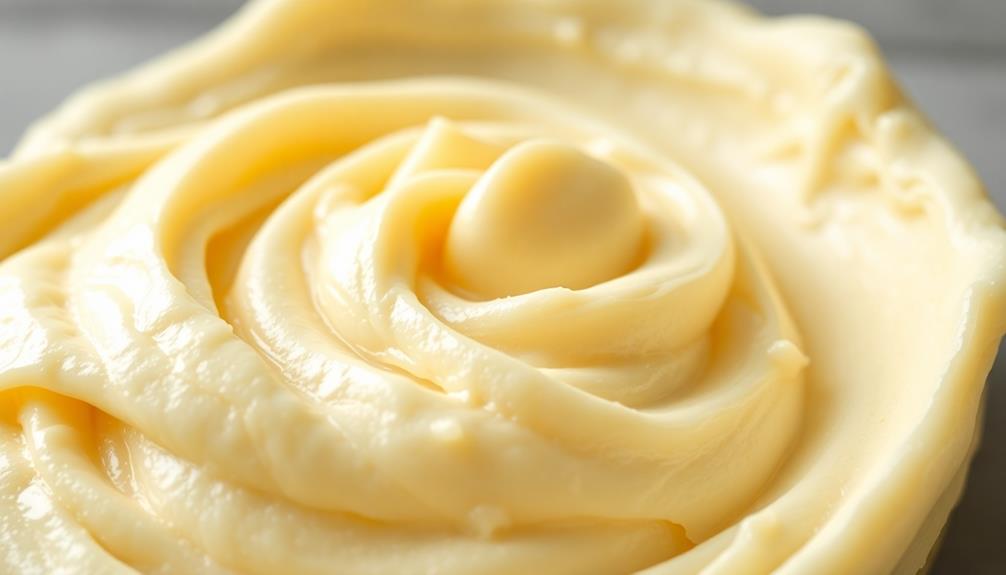
Next, gently fold the whipped egg whites into the pancake batter. This crucial step helps create the signature fluffy texture of your pancakes.
When folding, use a spatula to carefully incorporate the egg whites without deflating them. Avoid overmixing, as this can result in dense, heavy pancakes. Gently cut through the batter, lifting and turning it over itself to evenly distribute the egg whites. The goal is to maintain as much volume and airiness as possible.
Take care not to stir or beat the batter, as this will knock out the air you've incorporated. Instead, use a gentle, folding motion, cutting through the center and bringing the batter up and over itself.
Continue this process until the egg whites are just incorporated, leaving some visible streaks. This delicate touch ensures your pancakes will rise up tall and light on the griddle.
Step 4. Cook on Preheated Griddle

Once the batter is ready, preheat your griddle or nonstick skillet over medium heat.
It's important to let the surface get nice and hot before adding the batter – this helps the pancakes cook evenly and develop a beautiful golden-brown exterior.
You can test the temperature by flicking a few drops of water onto the surface. If the water sizzles and evaporates immediately, your griddle is ready to go. If the water just sits there or only simmers gently, let it heat up a bit longer.
When the surface is preheated, use a ladle or measuring cup to portion out the batter, pouring it onto the hot surface.
Be sure to leave a bit of space between each pancake so they've room to spread out. Cook for 2-3 minutes per side, flipping only once, until both sides are a lovely golden brown.
Avoid pressing down on the pancakes, as this can make them dense and rubbery. Serve the fluffy pancakes hot, with your favorite toppings!
Step 5. Resist the Urge to Overmix
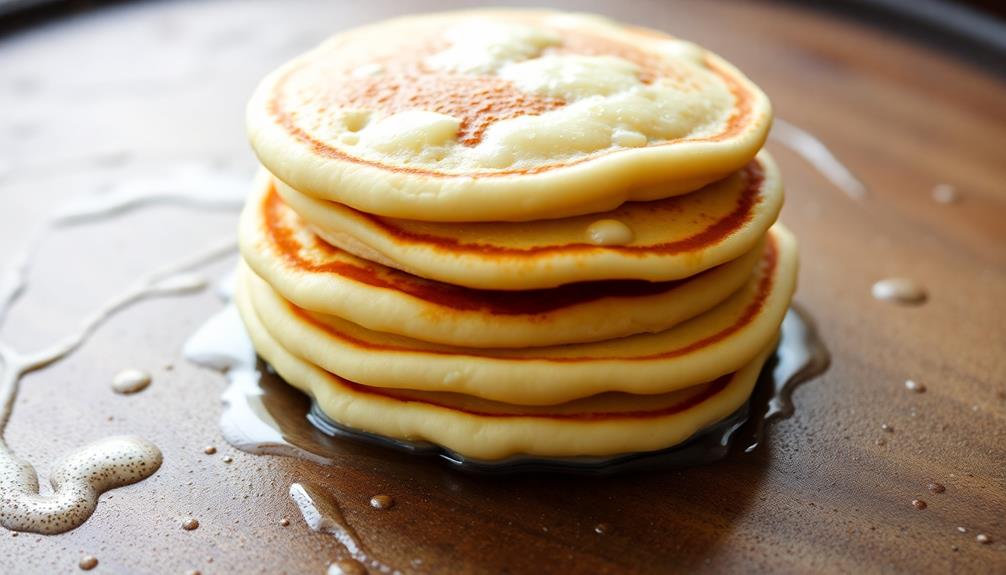
Although it may be tempting, resist the urge to overmix the batter. Overworking the mixture can result in tough, leathery pancakes instead of the light and fluffy ones you're aiming for. When you mix the wet and dry ingredients together, be gentle and stop as soon as they're just combined.
Maintaining a clean kitchen environment can also help you focus better on your cooking, as a tidy space promotes a more productive atmosphere health and wellness benefits.
Overmixing develops the gluten in the flour, which gives baked goods structure but can make pancakes dense and chewy. Instead, you want to maintain a light and tender texture. Mix only until the last streak of flour disappears – any longer, and you risk activating the gluten too much.
Use a light touch and a whisk or fork to gently fold the ingredients together. Avoid using an electric mixer, which can easily overwork the batter. If you spot a few small lumps, that's perfectly fine. They'll smooth out as the batter rests and cooks.
The key is to handle the mixture as minimally as possible for the best fluffy pancakes.
Final Thoughts
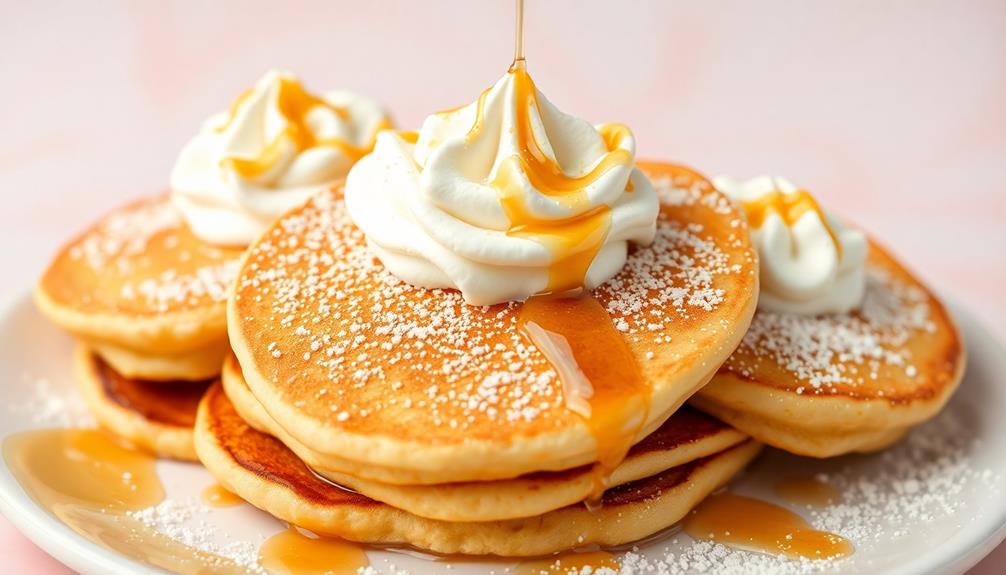
As you wrap up your pancake-making journey, keep in mind that perfecting the art of fluffy pancakes takes time and practice. While the techniques we've discussed may require some trial and error, don't be discouraged. Each batch is an opportunity to learn and improve.
Remember, the subtle adjustments you make to your batter consistency, cooking temperature, and flipping technique can make a significant difference in the final result. Pay attention to how your pancakes respond, and don't be afraid to experiment to find the perfect balance.
Additionally, don't hesitate to enlist the help of family and friends. Gathering feedback and sharing your culinary creations can be a fun way to refine your skills.
Embrace the process, and enjoy the satisfaction of crafting delightfully fluffy pancakes that will impress and delight your loved ones.
Frequently Asked Questions
Can I Use a Blender to Mix the Batter?
Yes, you can use a blender to mix the batter. It's a quick and efficient way to get the right consistency for your pancakes. Just be careful not to overmix, as that can make them tough.
Is It Necessary to Let the Batter Rest Before Cooking?
Letting the batter rest isn't strictly necessary, but it can improve the texture of your pancakes. The resting period allows the flour to fully hydrate, resulting in a lighter and fluffier final product. Give it a try!
Can I Freeze the Leftover Pancakes for Later Use?
Yes, you can freeze leftover pancakes for later use. Simply let them cool completely, stack them with parchment paper in between, and place them in an airtight container or freezer bag. They'll keep for up to 3 months.
How Do I Achieve the Perfect Golden-Brown Color on My Pancakes?
To achieve that perfect golden-brown color, preheat your griddle or pan over medium heat, and use a small amount of oil or butter. Flip the pancakes once bubbles appear on the surface, and cook until they're lightly browned on both sides.
Can I Substitute Milk With a Non-Dairy Alternative in the Recipe?
Absolutely, you can substitute milk with non-dairy alternatives like almond, soy, or oat milk. Just be aware that the texture and flavor may differ slightly, but you can still achieve delicious pancakes with the right substitution.
